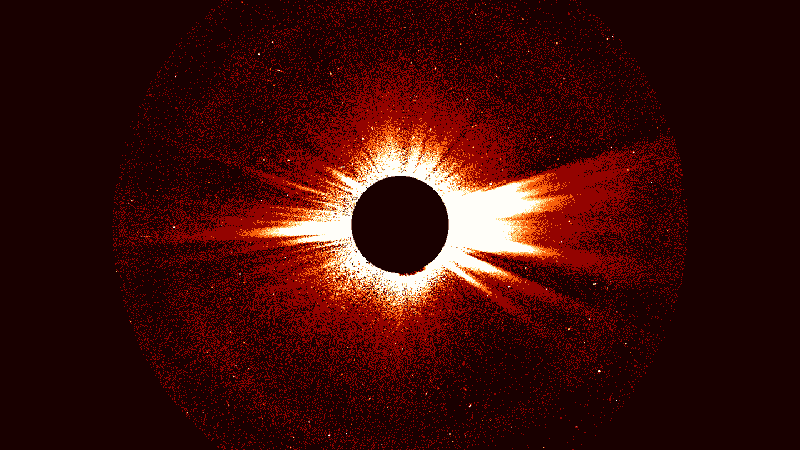
A lucky alignment of two sun-studying spacecraft may have finally solved a decades-old solar mystery.
Data from NASA’s Parker Solar Probe and the European Space Agency’s Solar Orbiter suggest that plasma waves known as Alfvén waves inject energy into the solar wind as it leaves the sun’s outer atmosphere, potentially explaining why the solar wind is much hotter and faster than heliophysicists expect. , researchers report Aug. 29 at Science.
The findings provide “a very strong indication that Alfvén waves can heat and accelerate the solar wind,” says Jean Perez, a plasma physicist at the Florida Institute of Technology in Melbourne, who was not involved in the study.
Since the dawn of the Space Age, when robotic probes first left the atmosphere, scientists have known that the solar wind—a stream of charged particles released from the sun’s atmosphere—accelerates as it blows through the solar system.SN: 18.8.17). Theoretical calculations also show that the temperature of the solar wind should drop as it expands into space. This decline occurs, but measurements reveal that it occurs more slowly than predicted.
Observations from Earth have previously seen Alfvén waves oscillating near the sun. Such waves are oscillations in the magnetic fields of the plasma emanating from the sun. They are sometimes so large that they turn back on themselves in what are called “switchbacks” (SN 1/15/21). The observed Alfvén waves had just the right amount of energy to explain the two old head-scratchers about the speed and temperature of the solar wind, but direct evidence was still lacking.
Enter Parker Solar Probe and Solar Orbiter. In late February 2022, Parker was passing through a region about one-fifth the distance between the sun and Mercury, exactly where these keyed Alfvén waves ripple. Coincidentally, the Solar Orbiter flew through the same plasma stream just under two days later in roughly the orbit of Venus.
“You have these two spacecraft intercepting the same solar wind, allowing us to quantify the energy of these waves,” says Yeimy Rivera, a heliophysicist at the Harvard-Smithsonian Center for Astrophysics in Cambridge, Mass.
Parker measured the plasma stream at about 1.4 million kilometers per hour, while Solar Orbiter found it was breaking away at 1.8 million km/h. The plasma in the Solar Orbiter was also 200,000 degrees Celsius, three times hotter than it should have been based on theoretical approximations. The Alfvén waves were temporally dispersed. That distribution would have injected exactly the right amount of energy into the solar wind to account for the increased speed and temperature measured by Solar Orbiter, Rivera and her colleagues calculate.
The effect is similar to clapping your hand in a wind tunnel, producing waves whose energy then mixes with the surrounding air, says heliophysicist Sam Badman, also of the Center for Astrophysics.
But not everyone is completely convinced that this mystery has been solved. It’s possible the team didn’t take into account the complexity of the solar wind, which means the two probes may not have captured the same plasma stream, some scientists say.
Rivera and Badman agree that such measurements are difficult, but think they have done multiple checks, such as finding the same amount of helium in the streams the spacecraft flew through, to verify their observations. In the future, the researchers say they hope to further validate their findings by exploring the detailed physics behind the transfer of energy between Alfvén waves and the solar wind.
#spacecraft #captured #waves #heat #accelerate #solar #wind
Image Source : www.sciencenews.org